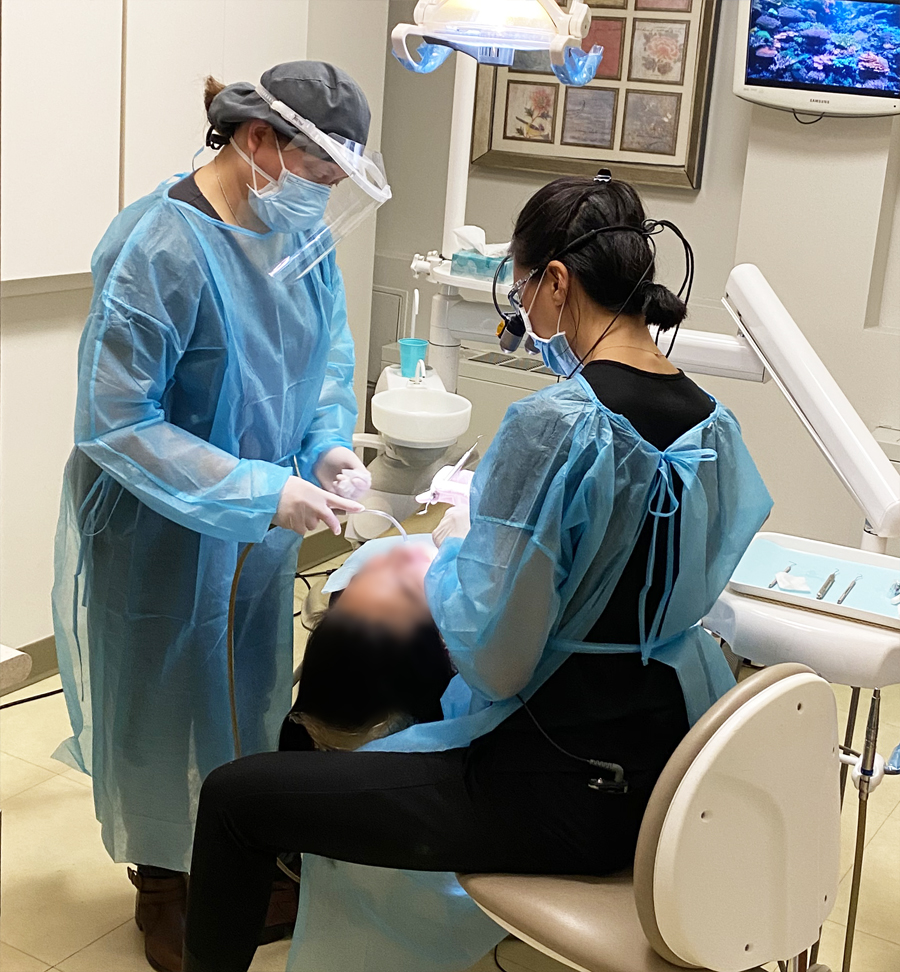What to Expect from Your First Visit to a Dentist in Eugene Oregon
What to Expect from Your First Visit to a Dentist in Eugene Oregon
Blog Article
A Guide to Usual Oral Problems That Call for a Dentist's Care
Toothaches, for instance, can be symptomatic of extreme issues such as dental caries, broken teeth, or abscesses, each calling for specific interventions like dental fillings or root canals. Affected wisdom teeth and jaw conditions can present considerable discomfort and issues.
Toothaches
Toothaches are a common oral problem that can range from moderate pain to extreme pain, commonly indicating an underlying concern that requires expert interest. This discomfort can stem from a range of sources, consisting of oral cavities, broken or fractured teeth, and dental abscesses. Each of these problems poses significant dangers if left neglected, possibly bring about more severe problems.
Tooth decays, also referred to as caries, are triggered by the build-up of plaque that deteriorates tooth enamel, bring about holes or pits in the affected teeth. Cracked or fractured teeth, on the other hand, may result from trauma, grinding, or attacking right into tough objects. These structural damages can expose the sensitive inner layers of the tooth, causing acute pain and increasing the danger of infection. Abscesses hurt infections at the origin of a tooth or in between a tooth and the gum, commonly arising from serious decay or unattended dental caries.
Efficient treatment of toothaches entails attending to the root cause. This might include dental fillings for tooth cavities, crowns for broken teeth, or origin canals and prescription antibiotics for abscesses. Early treatment by a dental professional can stop additional deterioration and reduce discomfort, making sure ideal oral wellness.
Gum Tissue Condition

The main source of gum disease is microbial plaque, a sticky, anemic film that regularly bases on teeth. Poor dental hygiene, cigarette smoking, genetic proneness, and particular medical problems, such as diabetic issues, can intensify the threat of developing periodontal disease. Routine dental exams are important for early discovery and administration of this condition.
Therapy for gum condition varies from expert oral cleaning and scaling to more sophisticated procedures like origin planing and gum surgical treatment, depending upon the severity. Keeping good dental hygiene methods, consisting of brushing two times daily, flossing, and using an antibacterial mouthwash, can substantially decrease the danger of gum illness and advertise healthier gum tissues.
Cavities
Tooth cavities, also called tooth decays, are a common dental problem defined by the devastation of tooth enamel due to acid-producing microorganisms in the mouth. These bacteria grow on sugars and starches from food and beverages, generating acids that progressively deteriorate the enamel, leading to tooth cavity development.
Early-stage cavities may disappoint signs, yet as they proceed, they can trigger toothache, sensitivity to hot or cool, visible openings or pits in the teeth, and staining. If left untreated, tooth cavities can pass through much deeper layers of the tooth, possibly resulting in severe pain, infection, and about his even tooth loss.
Avoiding tooth cavities includes a mix of great dental health methods and nutritional routines. Normal cleaning with fluoride tooth paste, flossing, and regular oral exams are essential. Dental practitioners may also suggest added preventative actions, such as fluoride therapies and oral sealants, to safeguard teeth from decay.
Treatment for dental caries relies on their extent. Small tooth cavities can be attended to with dental fillings, which restore the tooth's framework. Advanced situations may need crowns and even root canal treatment if the decay has actually gotten to the tooth's pulp. Prompt treatment by a dentist is vital to avoid difficulties and preserve overall dental health and wellness.
Impacted Wisdom Pearly Whites
Influenced wisdom teeth are a widespread dental concern that happens when the 3rd molars, generally described as knowledge teeth, stop working to completely arise or line up properly within the mouth. This problem often arises from insufficient space in the jaw or an uncommon development angle of the teeth. Impacted knowledge teeth can result in a selection of problems, including damages, discomfort, and infection to nearby teeth.
When knowledge teeth become affected, they are usually partially emerged or remain totally beneath the gum tissue line. This partial eruption can produce a path for microorganisms to enter the gums, causing infections that show up as swelling, pain, and even fever (dentist in eugene oregon). Furthermore, influenced wisdom teeth can exert pressure on neighboring teeth, potentially triggering crowding or changing
A thorough dental assessment, typically including X-rays, is necessary for diagnosing affected knowledge teeth. Treatment typically includes medical removal, done by an oral surgeon. The procedure aims to reduce pain and avoid additional issues, such as cysts or damage to surrounding bone structures. Post-operative care is crucial to ensure proper healing and reduce the danger of infection. Regular dental examinations are suggested to monitor the problem and keep oral wellness.
Jaw Conditions
Final Thought

Oral tooth cavities, additionally known as caries, are triggered by the buildup of plaque that wears down tooth enamel, leading to openings or pits in the affected teeth. Abscesses are painful infections at the root of a tooth or in between a tooth and the gum tissue, usually resulting from extreme decay or neglected tooth cavities.
Influenced wisdom teeth are a common oral issue that happens when the third molars, generally referred to as wisdom teeth, fall short to completely arise or align appropriately within the mouth. Affected knowledge teeth can lead to a selection of complications, consisting of infection, damages, and pain to adjacent teeth.
Additionally, influenced wisdom teeth can exert stress on bordering teeth, possibly creating crowding or changing.
Report this page